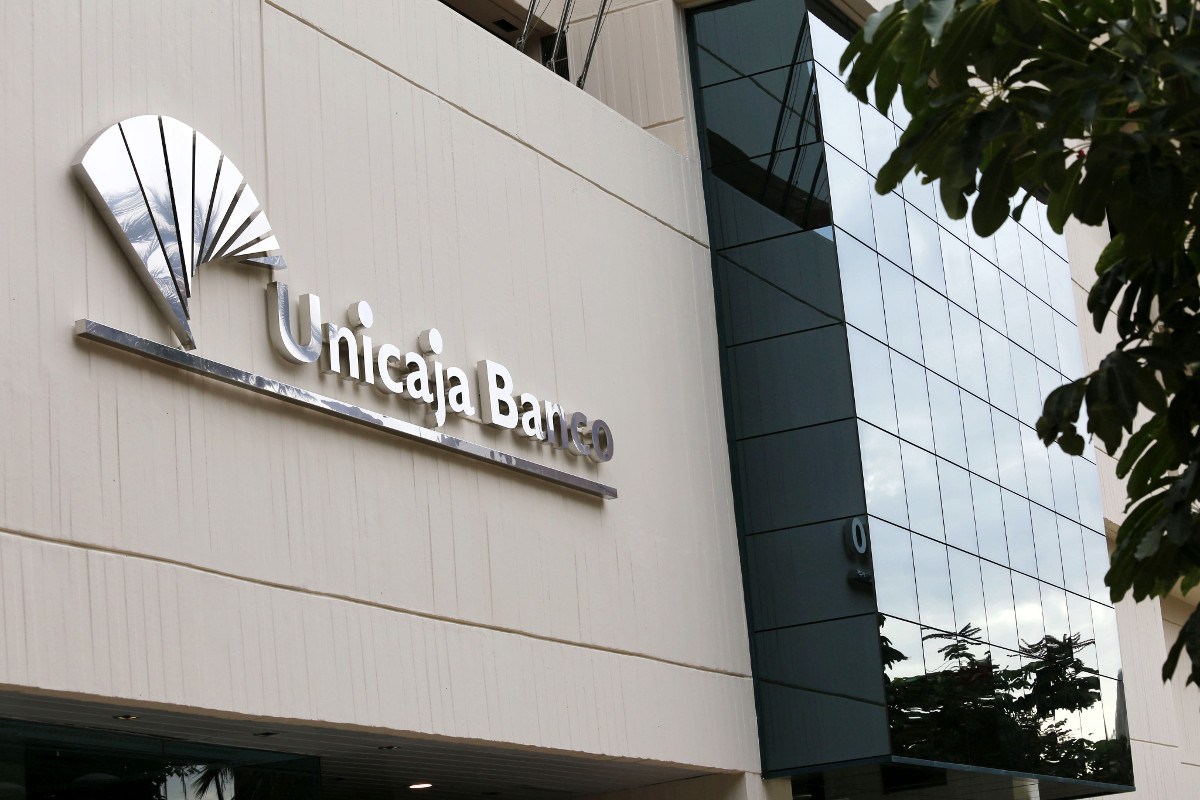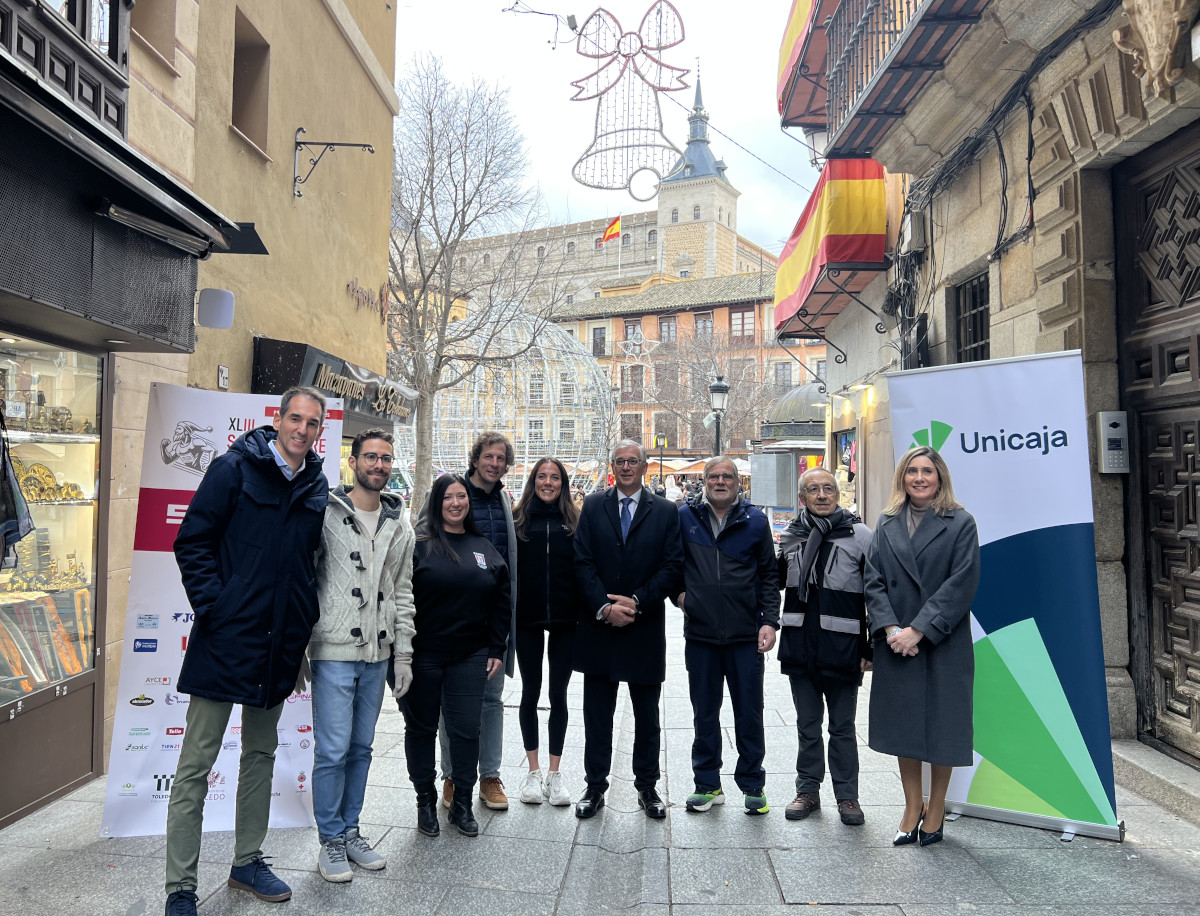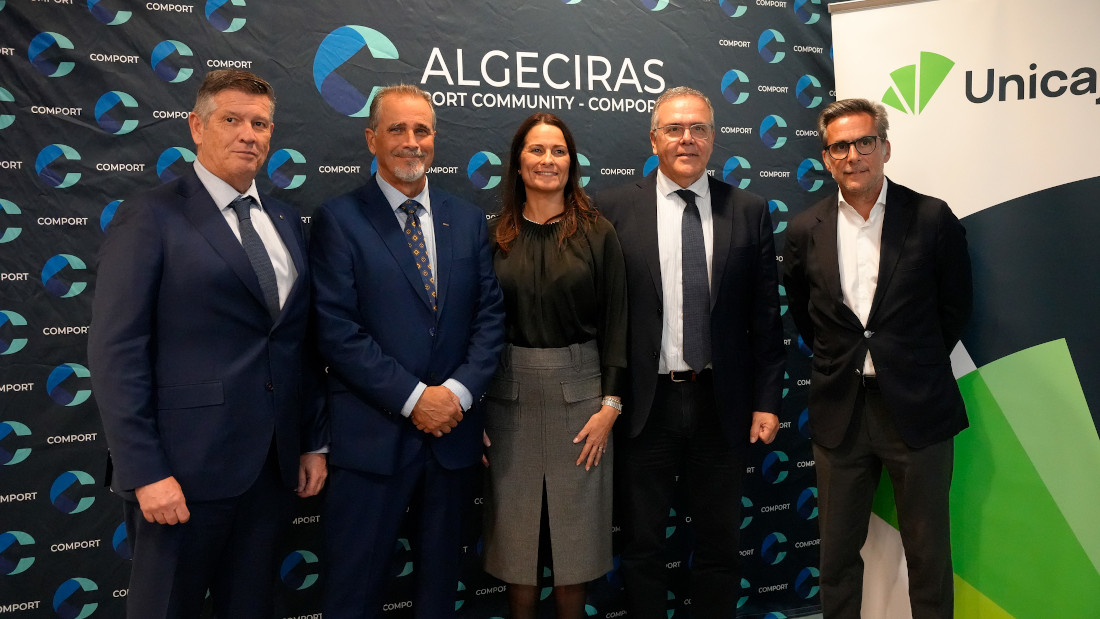Grupo Unicaja Banco recorded a net profit of 267 million euros at the end of 2023, after having booked provisions of 546 million euros for the year as a whole, which will enable it to continue with the accelerated reduction of non-performing assets and the substantial improvement in structural profitability.
Excluding the impact of the new temporary banking tax, which amounted to 63.8 million (registered entirely in the first quarter), net income would have amounted to 330 million, 19.0% higher than in December 2022.
The tax contribution settled by the Group in 2023[1] amounted to 461 million euros, 14% higher than in 2022.
Core banking margin (net interest income plus net fees minus costs), the main indicator of profitability of the typical banking business, increased by 39.6% over the previous year. All margins increased during the year. Net interest income grew by 26.1% for the year, 6.4% in the last quarter, with an improvement in the spread of 14 bps, supported by the retail business.
Without yet fully reflecting the effect of the rise in interest rates, customer spread increased by 13 bps in the fourth quarter, to 2.75%, with a contained financial cost. Gross margin rose by 10.6%, pre-provision profit increased by 23.2%, and net operating income rose by 50.6%. The cost/income ratio -excluding the effect of the temporary bank tax- improved by 7 pp in one year to 46.7%.
Retail customer funds totaled 88,825 million euros. The customer deposit base stands out for its high granularity and stability, with a high weight of individual customers, who represent 75% of the total volume. Term deposits increased by 72.4% year-on-year and 16.8% in the quarter.
Off-balance-sheet funds and insurance rose by 4.1% year-on-year to 21,087 million, with 15.4% growth in savings insurance, 1.4% in mutual funds and 9.2% in other assets under management, partially offset by a fall of 1.9% in pension funds. Total funds under management increased by 0.6% during the year to 98,747 million euros.
The balance of performing loans ended 2023 at 48,325 million euros, in a context of a contraction in demand for financing, an increase in early repayments and cancellations, and a concentration of maturities of loans guaranteed by the ICO. In this scenario, the balance of mortgage financing to individuals fell by 1.7% in the quarter (-4.7% in the year) to 30,134 million, although consumer financing increased by 0.3% in the quarter (0.5% year-on-year). 7,022 million in new loans and credits were granted during the year, of which 2,291 million were mortgages to individuals, maintaining the market share in mortgage formalizations at 5.6% of the national total, a percentage above Unicaja Banco’s natural share.
Within operating expenses, the reduction in personnel expenses (-3.8%) is noteworthy, which has allowed the cost to income ratio to improve by 7 pp over the last twelve months, to 46.7% (excluding the impact of the bank levy). This decrease is the result of the materialization of the synergies derived from the restructuring plans carried out, confirming at the end of the year the trend of previous periods.
The volume of non-performing assets (NPAs) accelerated its reduction, with a year-on-year decrease of 25.2%, due both to the decrease in the stock of foreclosed assets (31.6%) and in NPLs (19.1%). The decrease in NPAs has been accompanied by the reinforcement of high levels of coverage, which gives continuity to the traditional policy of prudence followed by Unicaja Banco.
The NPA coverage ratio improved year-on-year by 2.9 pp to 68.2%, mainly due to the foreclosed assets ratio, which increased by 9.8 pp (to 73.9%), while that of NPLs ended the year at 63.7%. The NPL ratio fell by 39 bps in the year to 3.14%. The cost of risk remained contained in the fourth quarter, at 27 bps (29 bps for the year).
In terms of solvency indicators, the bank maintained its solid position. The CET1 fully loaded ratio stood at 14.7% (an increase of 1.7 pp) and the CET 1 phased in ratio, at 15%, exceeding the required solvency levels by 6.7 pp.
This significant capital generation has led the company to request authorization to carry out a share buyback program for up to 100 million euros (with a maximum of 3.8% of capital). It will also make it possible to propose to the General Meeting of Shareholders the payment of a dividend of 132 million euros.
Finally, it is worth noting the maintenance of a high level of liquidity, with NSFR ratios of 148.5% and LCR of 308%.
Balance sheet
Stable, granular deposit base with high percentage of private individuals
Customer funds amounted to 98,747 million euros, maintaining a stable trend during the year (+0.6% compared to December 2022). Unicaja Banco maintains as a strength and competitive advantage a very stable and granular customer deposit base -75% of the total corresponds to individual customers-. Term deposits increased by 16.8% in the quarter and by 72.4% in the last twelve months.
Off-balance sheet funds and insurance increased by 4.1% year-on-year, with a 15.4% growth in savings insurance and 9.2% in other assets under management. The accumulated mutual funds rose by 1.4% year-on-year to 11,404 million; on the other hand, pension funds fell by 1.9% to 3,611 million.
Retail customer funds increased by 1.5% in the quarter and decreased by 1.4% year-on-year, in line with the general trend in the sector, in a context of rising prices and interest rates, which have encouraged early repayment of loans. Purchases of Letras del Tesoro deposited with the bank amounted to 1,420 million euros in the year. If they were included in retail customer funds under management, these would increase by 0.2% in the year.
Performing loans stood at 48.325 billion, in a macro context of reduced demand and higher credit costs, derived from the aforementioned aspects, which has led to an increase in early repayments and cancellations. Added to this is a greater concentration of maturities of loans with ICO guarantees granted during the pandemic. All this has led to a quarterly decrease in the balance of 2.4% (-8.7% in the year).
Mortgage lending to individuals fell by 1.7% in the quarter (4.7% in the year), although consumer financing increased by 0.5% year-on-year. In the year, new loans reached 7,022 million, of which 2,291 million corresponded to mortgage financing for individuals, representing 33% of the total. Unicaja Banco’s market share in new mortgage loans stands at 5.6% of the national total (according to data as of November 2023, accumulated over the last 12 months), above Unicaja Banco’s natural share in the Spanish banking sector.
Improved balance sheet quality, with high coverage levels
Unicaja Banco maintained its traditional policy of prudent risk management. In the fourth quarter, the NPL ratio fell by 25 bps to 3.14%. The cost of risk remained contained at 27 bps (29 bps for the year).
The total volume of non-performing assets (NPAs) continued and accelerated its downward trend, with a year-on-year fall of 25.2% (950 million euros). The balance of non-performing loans fell by 19.1% compared with December 2022. The year-on-year reduction in the stock of foreclosed real estate assets, in gross value terms, was 31.6%.
At the same time, Unicaja Banco reinforced its high coverage levels, to 63.7% for NPLs (2.9 pp lower than in December 2022), to 73.9% for foreclosed assets (up 9.8 pp), and to 68.2% (an increase of 2.9 pp) for total NPAs (NPLs and foreclosed assets). Net NPAs were down 20.5% in the fourth quarter and 31.3% in the year. As of December 31, 2023, the volume of foreclosed assets maintained a net book value of 327 million, representing 0.3% of the bank’s balance sheet.
Income statement
Growth in all margins
For the year as a whole, Unicaja Banco recorded a consolidated net profit of 267 million euros (371 million before taxes), after making provisions of 546 million euros. Core banking margin, the main indicator of the profitability of the typical business, increased by 39.6% compared to the previous year.
In 2023, the performance of all margins was positive.
Net interest income increased by 26.1% to 1,353 million, underpinned by the retail business, whose contribution in the fourth quarter was 6 million higher than in the third quarter, due to the repricing of the variable-rate loan portfolio and higher rates on new production. The customer (commercial) margin, without yet fully reflecting the effect of the interest rate hike, rose by 120 bps to 2.75%.
Net fees rose 1.6% year-on-year to 533 million, driven by the good performance of insurance and mutual fund activities. Net fees accounted for 30% of gross margin, which reached 1,776 million, up 10.6% year-on-year.
Operating expenses continued to decline, by 0.4% year-on-year, with personnel expenses down 3.8%, as a result of the near completion of the planned restructuring plans.
The cost to income ratio -excluding the effect of the temporary bank tax- improved year-on-year by 7 pp to 46.7% (48.4% including this effect). As a result, pre-provision profit reached 917 million, 23.2% higher than in 2022.
Loan loss provisions fell by 31.7%. Net operating income was 657 million, 50.6% higher than in the previous year. After higher provisions for other profits or losses, the profit before tax improved to 371 million euros, 13.5% higher than in the previous year, excluding the effect of the temporary bank tax.
Solvency and liquidity
Increase in CET 1 fully loaded to 14.7% and high liquidity position
Unicaja Banco maintains high and solid solvency levels[2] . At the end of the year, it had a CET1 phased-in ratio of 15.0%, a Tier 1 capital ratio of 16.8% and a total capital ratio of 18.8%. These ratios comfortably exceed the levels required of the entity by 6.7 pps in CET 1 and 6.1 pp in total capital.
In fully loaded terms, the bank had a CET 1 ratio of 14.7%, a Tier 1 capital ratio of 16.5% and a total capital ratio of 18.5%. Over the last twelve months, CET 1 fully loaded has increased by 1.7 pp, as a result of the reduction in risk-weighted assets (related to sale of foreclosed assets), lower equity exposure and deleveraging, mainly in the corporate segment.
Based on this significant capital generation, authorization has been requested for a share buyback of up to 100 million euros (with a maximum of 3.8% of the capital), and will allow us to propose the payment of a dividend of 132 million euros.
The bank maintains a comfortable and high liquidity position, reflected in the Loan to Deposit ratio, which stood at 73.7%, a short-term liquidity ratio (LCR) of 308%, and a stable funding availability ratio (NSFR) of 148.5%.
Digital business and commercial performance
In the fourth quarter of 2023, the Digital Plan, included in the 2022-2024 Strategic Plan, continued to be implemented. Thus, the Digital Banking update has been successfully completed, which includes an improved user experience with a renewed design focused on intuitive navigation.
The continued momentum of the Digital Plan consolidates the improvement achieved in digital adoption, acquisition and sales ratios. At the end of the fourth quarter, 64.4% of customers were digital. These channels have enabled the bank to attract 30% of new customers, and their contribution to consumer loans has accounted for 49.2% of the total, 21.9% in the case of accounts, and 27% in mutual funds/delegated portfolio management subscriptions.
Innovation
During the fourth quarter, Unicaja Banco continued to develop its innovation strategy. Within the framework of its co-innovation labs, an initiative has been launched for the creation of solutions that combine voice biometric technologies and virtual assistants, in order to continue building a banking model that provides greater security to customers and facilitates inclusion and access to digital services for groups at greater risk of financial exclusion.
Main actions in sustainable finance
In the area of sustainable finances, the following actions were carried out in the fourth quarter of the year:
i. In order to continue advancing in sustainable development, the bank has approved the policy of exclusions to financing due to environmental and social risks.
ii. As part of the development of the ‘Sustainable Business Agenda’, the current range of ESG products has continued to expand, with the approval of new mixed-rate mortgages (‘Oxygen Mortgages’) that subsidize the interest rate on the financing of energy-efficient assets, or the extension of the Ecomobility Loan, a green loan aimed at individuals to finance the acquisition of sustainable cars, as well as electric recharging points.
iii. In the area of financial inclusion, the bank has announced its decision to withdraw commissions to its customers for certain cash withdrawals in the mobile ATM service of the Valladolid Provincial Council. In addition, it has incorporated the figure of the digitalization manager (150 professionals) in the branches of the commercial network with the highest volume of customers, by means of a guidance adapted to the customer who needs it, for them to acquire the confidence and the necessary skills to carry out operations in a secure environment.
iv. In financial education, within the framework of the Edufinet Project:
- A new Financial Education Center has been opened in Salamanca, in collaboration with Fundación Caja Duero and Funcas.
- The Project won the First prize in the Financial Education category, in the Over 65s section of the CECA Social Work and Financial Education Awards 2022.
- The 6th Financial Education Congress was held, with close to 500 participants.
[1] Taxes and Contributions to guarantee and resolution instruments
[2] Capital ratios include net income, net of accrued dividends, computability pending approval by the European Central Bank.
Download here charts related to earning presentation.



